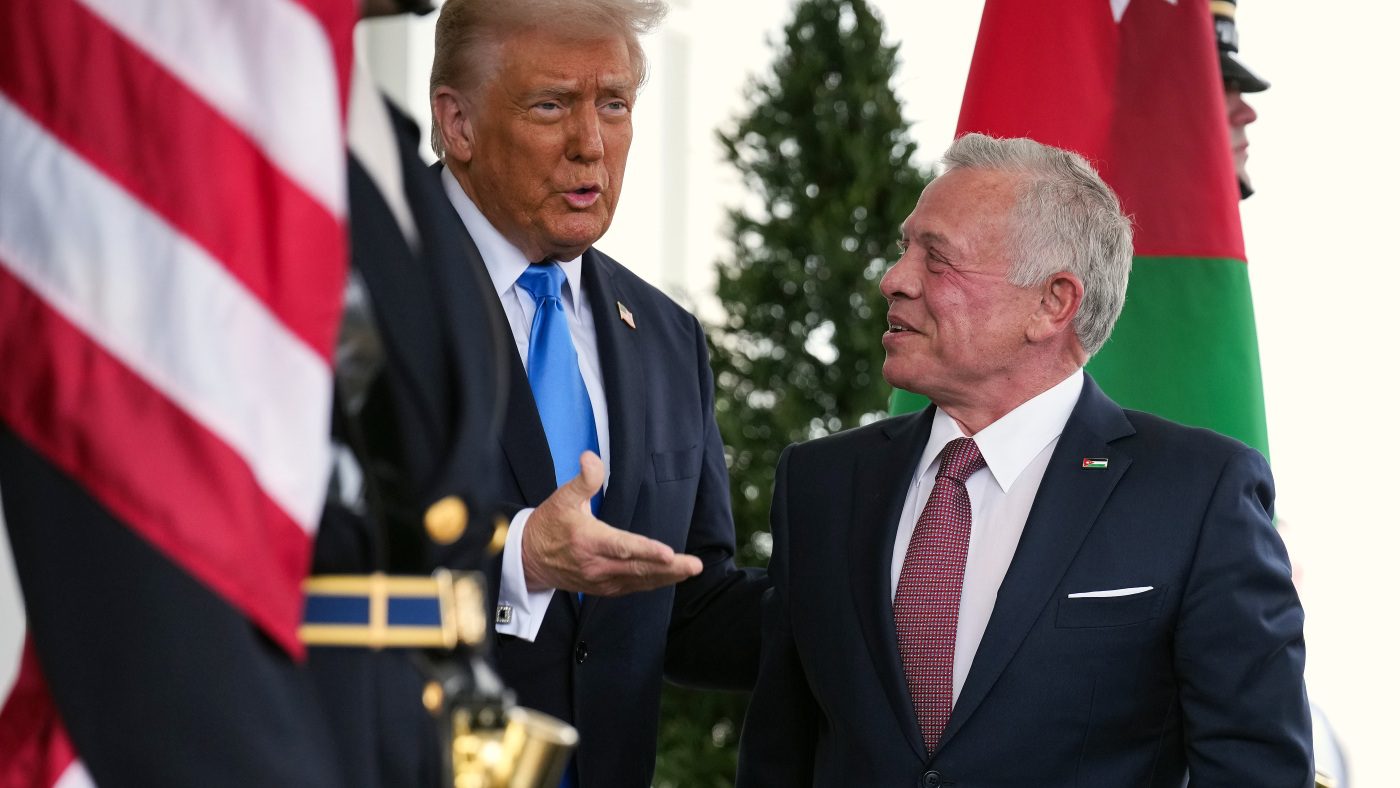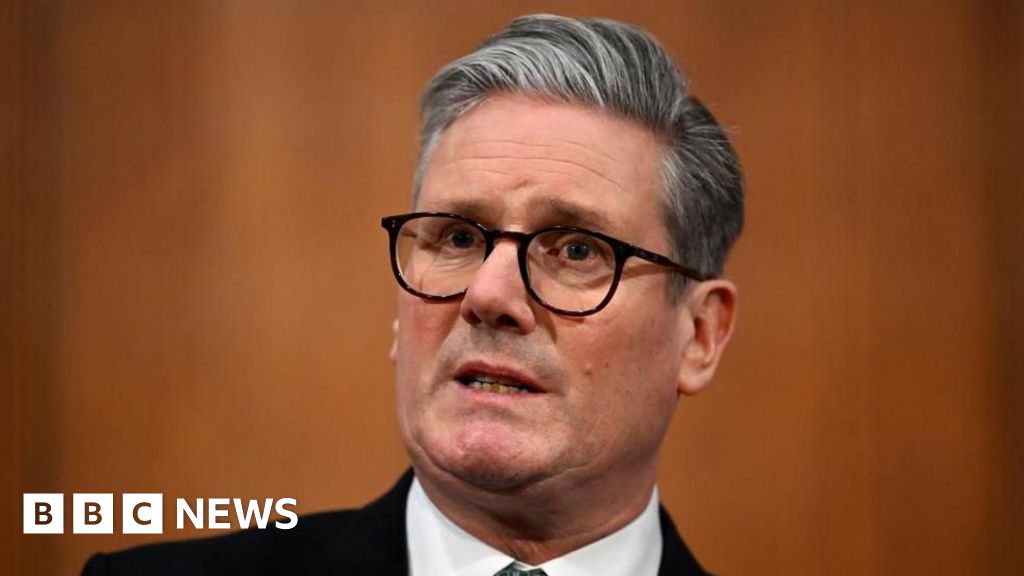
U.S.-Jordan Relations: Trump’s Controversial Proposal on Gaza

President Trump met with Jordan’s King Abdullah at the White House Tuesday, proposing that the U.S. assume control over Gaza and facilitate the relocation of its approximately 2 million inhabitants to nearby nations, including Jordan. However, King Abdullah firmly countered this by stating that he and his Arab counterparts oppose such a plan to displace Palestinians.
Andrew Harnik/Getty Images North America
DAMASCUS, SYRIA — President Trump has ignited discussions in the Middle East by suggesting a U.S. takeover of Gaza, alongside the relocation of its Palestinian population.
More developments could arise as Trump hints at future considerations involving Syria, Saudi Arabia, and Iran, although specific details remain undisclosed.
In the historic Umayyad Mosque’s vast courtyard, Syrian attorney Ahmed Kassab delivered an important message for Trump: “Syria is weary from 14 years of conflict. We seek peace and a chance to live,” he said.
Kassab, like many Syrians, desires to rebuild relationships between Syria and the United States, aiming to end the longstanding tensions that have existed since the Assad regime. He urges the U.S. to lift the extensive sanctions in place since the civil war.
Trump’s recent unscripted comments regarding the Middle East have sparked a mix of confusion and speculation about his intentions.”There’s a sense of urgency to decipher Trump’s plans,” noted Paul Salem, an analyst associated with the Middle East Institute in Beirut, emphasizing the uncertainty surrounding his messages.

U.S. troops in northeastern Syria patrol oil facilities in September 2024. These forces, leading a coalition that defeated ISIS, remain to avert the group’s resurgence. While Trump previously considered withdrawal, he ultimately chose to maintain military presence in Syria.
DELIL SOULEIMAN/AFP via Getty Images
Syria: A Complicated Situation
Trump’s stance on Syria suggests a desire to remain uninvolved. “We’re not engaged in Syria. They have plenty of issues to manage independently,” he commented earlier.
Nonetheless, approximately 2,000 U.S. troops still stationed in northeastern Syria continue their mission of countering ISIS’s re-emergence. During his first term, Trump signaled intent to withdraw after defeating ISIS, yet advisors urged him to reconsider due to ongoing threats.
Trump currently remains non-committal regarding the future of these troops, stating he is reviewing the circumstances. However, there is concern that should the U.S. withdraw, the Syrian military may struggle with the remnants of ISIS, as it is still in the process of restructuring.
Hussein Ibish from the Arab Gulf States Institute emphasizes the significance of the remaining U.S. troops. “Their presence yields substantial results, albeit in small numbers; their departure could create a power vacuum,” he warns.
These American forces collaborate closely with Kurdish troops in the Syrian Democratic Forces (SDF), and their exit would leave Kurdish fighters feeling vulnerable, Ibish added.
Saudi Investment Opportunities
In stark contrast to his approach in Syria, Trump is optimistic about fostering relationships with Saudi Arabia. His aim is a trilateral agreement involving Israel and Saudi Arabia, promoting diplomatic connections while enhancing U.S.-Saudi economic ties.
Saudi Arabia has already proposed a staggering $600 billion investment opportunity in the United States.
However, Trump’s strategy for large-scale agreements faces challenges from ongoing regional conflicts, such as the quest for a Palestinian state.
The Saudis have conveyed that any diplomatic and economic collaboration would require serious progress toward the creation of a Palestinian state. This demand places additional pressure on Trump as tensions persist, with Israel’s government led by Prime Minister Benjamin Netanyahu opposing a Palestinian state and navigating a fragile ceasefire with Hamas.
Trump’s plan for a U.S. takeover of Gaza, relocating its residents to other parts of the region, faced outright rejection from Jordan and other Arab nations as well as Palestinian leadership.
After meeting with Trump, King Abdullah of Jordan emphasized that “Jordan remains steadfast in opposition to the displacement of Palestinians in Gaza and the West Bank.” In a social media message, he stated, “The priority must be rebuilding Gaza without displacing its Palestinian population while addressing their urgent humanitarian needs.”

A large missile on display adjacent to the Azadi Tower in Tehran, Iran, commemorates the 46th anniversary of the 1979 Islamic Revolution. This event occurs amid a backdrop of setbacks for Iran’s regional proxies, compounded by Israeli air strikes that have undermined Iran’s air defenses.
SASAN/AFP via Getty
Trump’s Strategy for Iran
Concerning Iran, Trump has recently enacted an executive order emphasizing a stringent “maximum pressure” strategy. While he employed this tactic during his first term, Trump expressed hope for potentially reducing reliance on such methods this time.
Iran faces significant challenges, having endured attacks on its proxies in Gaza and Lebanon. Additionally, its influence has waned with the loss of a significant ally following the ousting of Assad in Syria, while Israeli air operations have severely diminished its air defense capabilities.
Former Israeli National Security Advisor Eyal Hulata described this moment as ideal for Trump to apply substantial pressure on Iran to concede in its nuclear negotiations.
“Re-engaging in a pressure campaign is vital,” remarked Hulata. “Iran needs to relinquish its nuclear ambitions for an extended period.”
However, Hussein Ibish posits that Iran might be more open to negotiations now than in the past. He recommends that Trump should propose sanctions relief and assurances for regime security if Iran deters its nuclear aspirations, thus averting disastrous consequences.
Throughout his first term, Trump sought to minimize U.S. involvement in the Middle East, echoing similar patterns observed under Presidents Obama and Biden. Yet, the ongoing volatility of the region has consistently drawn U.S. leaders back into the fray.









